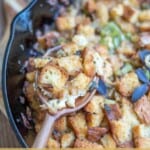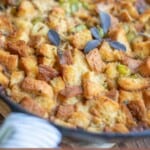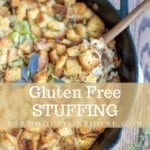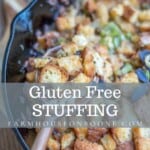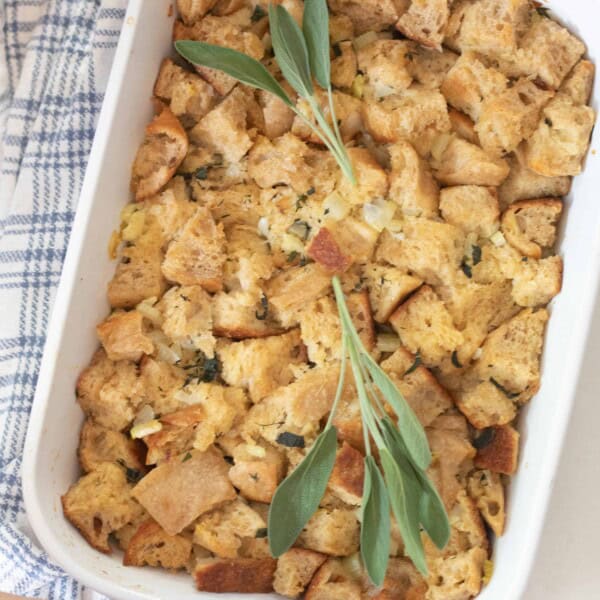A delicious, gluten-free stuffing with all the classic flavors of sage and thyme, perfect to grace the holiday table.
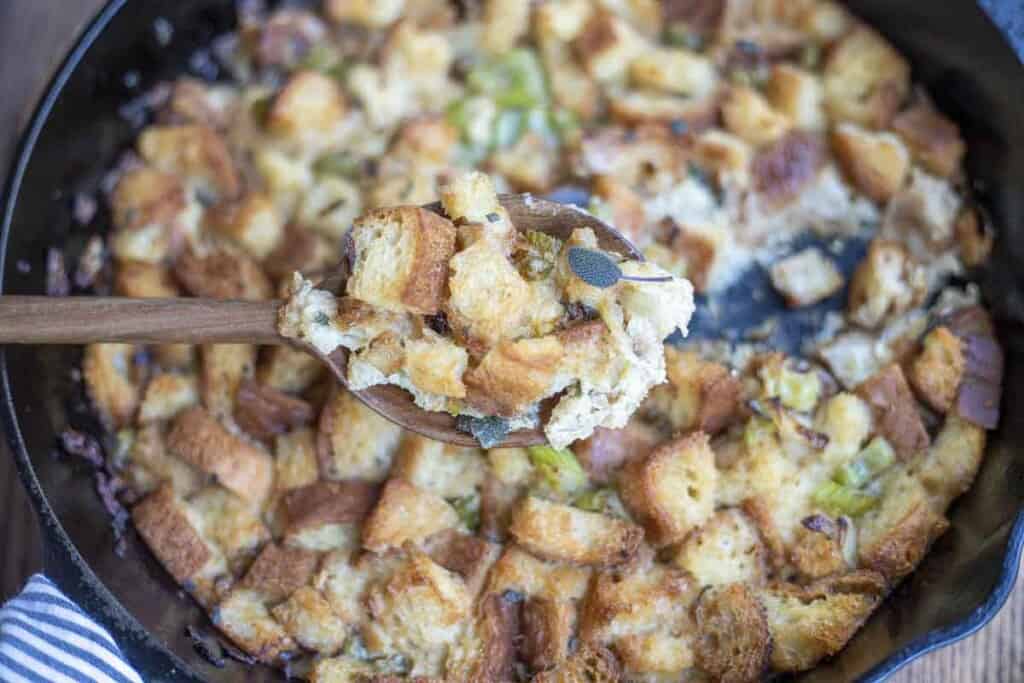
During the holidays, it can be such a struggle to make those classic dishes without the gluten.
Now, you know I love sourdough bread. While sourdough does have lower amounts of gluten compared to regular bread and can help those that are gluten sensitive to tolerate glutenous grains, some people cannot tolerate gluten no matter what.
That is where this gluten-free stuffing comes into play. The same wonderful flavors, but with gluten-free bread. You won’t even miss the gluten.
Crunchy and buttery bread is mixed with onion and celery, flavored with sage and thyme for the yummiest stuffing
This is a take on my sourdough stuffing, but with considerations for swapping with gluten-free bread. GF bread just doesn’t absorb liquid the same as regular bread, so I reduced the amount of broth.
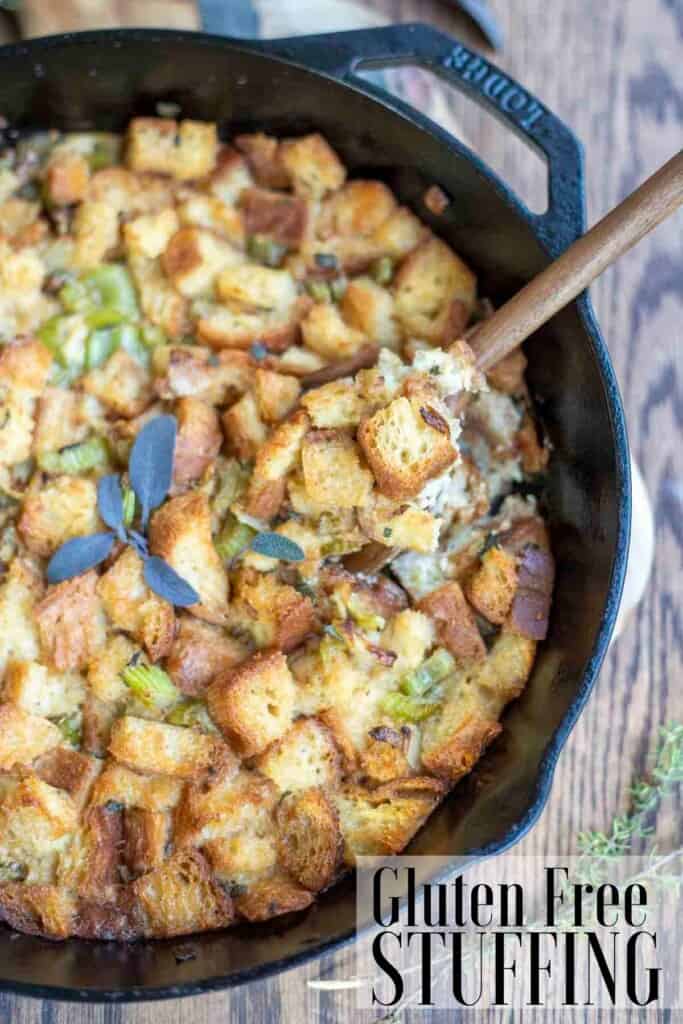
Tips For Making Gluten Free Stuffing:
- The type of bread you are using may determine the amount of liquid needed. Some breads absorb more than others. I suggest starting with one cup of broth, then after adding the bread determine if 1/2 to one cup more need to be added.
- I love using fresh herbs, and thankfully sage is very frost tolerant and easily still growing in November. But if you don’t have access to fresh herbs, no worries – just substitute for dried.
- To make this dairy-free, substitute the butter for olive oil.
This post contains affiliate links, which means I make a small commission at no extra cost to you. See my full disclosure here.
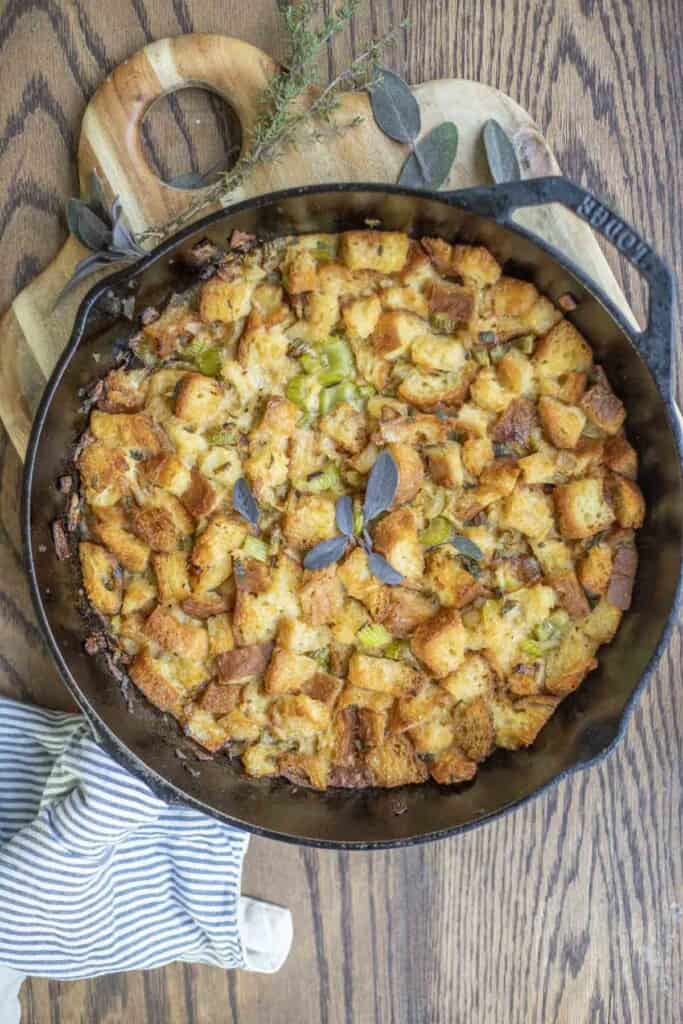
What is gluten free stuffing made of?
- Gluten-free bread – This can be homemade or store-bought. Just about any bread will do.
- Unsalted butter
- Celery, chopped
- Onion, chopped Sage, fresh or dried
- Chicken broth – homemade or store-boughtThyme, fresh or dried
- Eggs – This works as a binder.
- Salt – The amount of salt you add will depend on the type of broth you use. Homemade or low/no sodium broth may require you to add more to the dish than using a regular broth. If you are unsure, you can wait until after the stuffing is baked to taste and see if it needs more salt.
- Pepper
Tools you may need:
Knife
Cutting board
Large bowl
Whisk
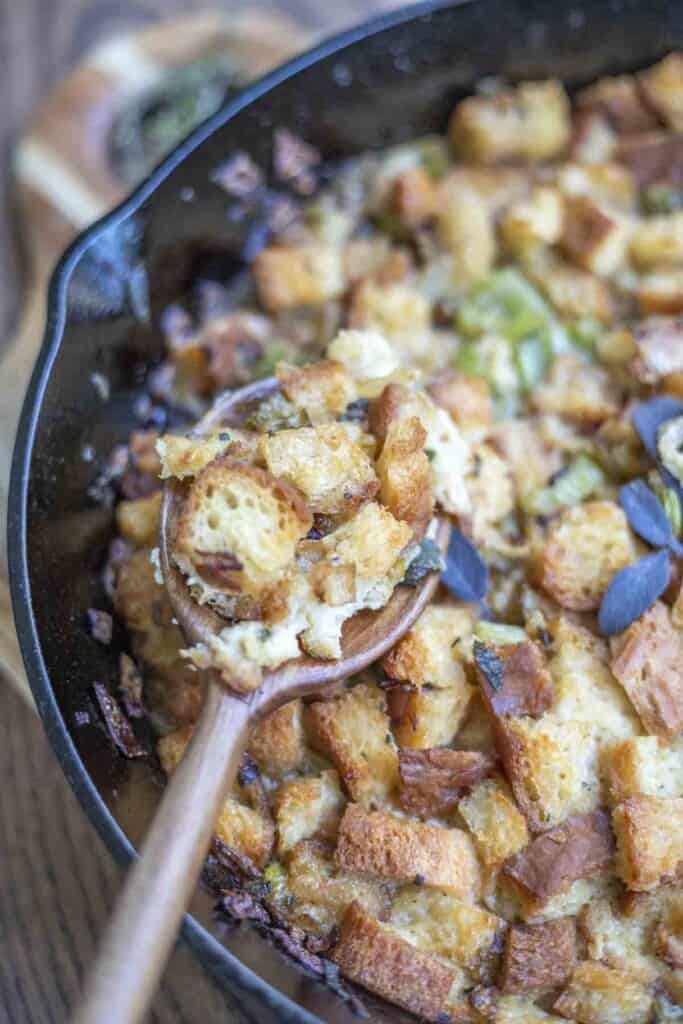
How To Make Gluten Free Stuffing
Prepare and bake gluten-free sourdough bread if making from scratch.
Preheat oven to 350.
Melt butter in a cast iron skillet or pan.
Cut bread into one-inch slices, then into one-inch chunks.
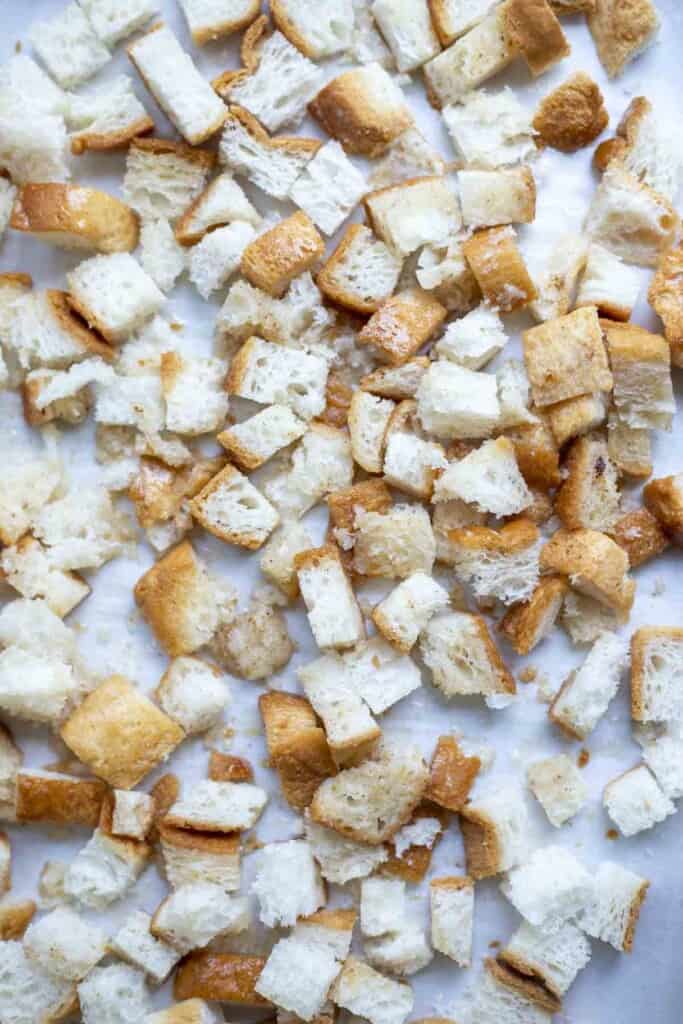
Spread bread cubes onto a parchment-lined baking sheet and pour about half of the melted butter over the bread pieces. Toss together.
Bake for twenty minutes, stirring halfway in between so the bread doesn’t burn. You want it to get nice and toasty.
Dice celery and onions, then place into pan with the remaining melted butter over medium-low heat.
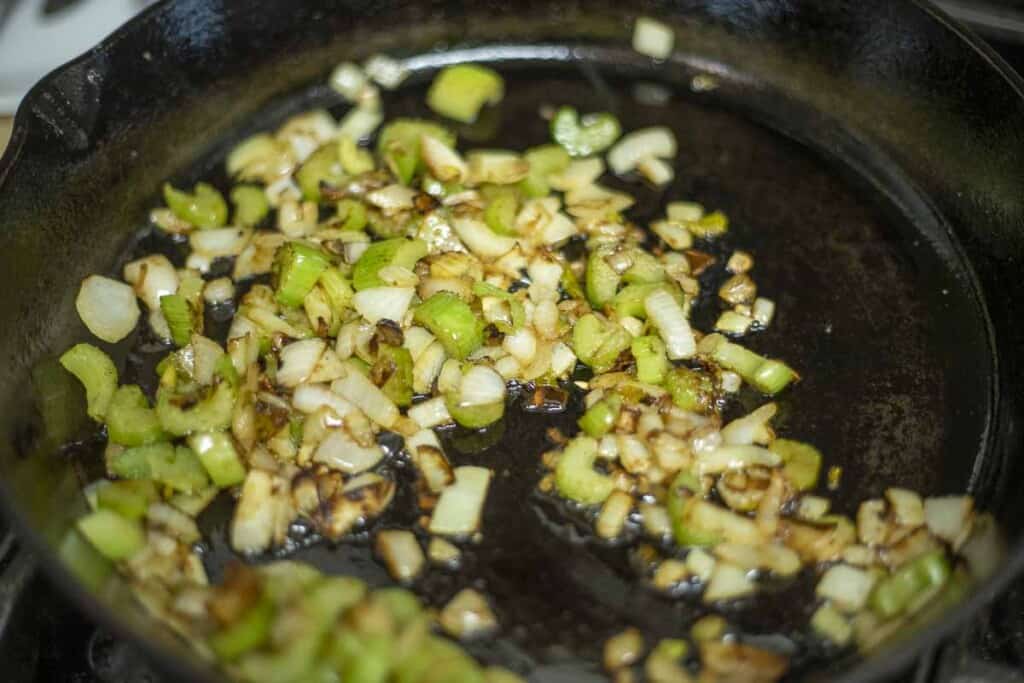
Sauté until they are a little soft, around 5-10 minutes.
Chop fresh thyme and sage, then add to veggies. You could also use dried herbs, but you’ll only need about a teaspoon of each.
Add salt and pepper.
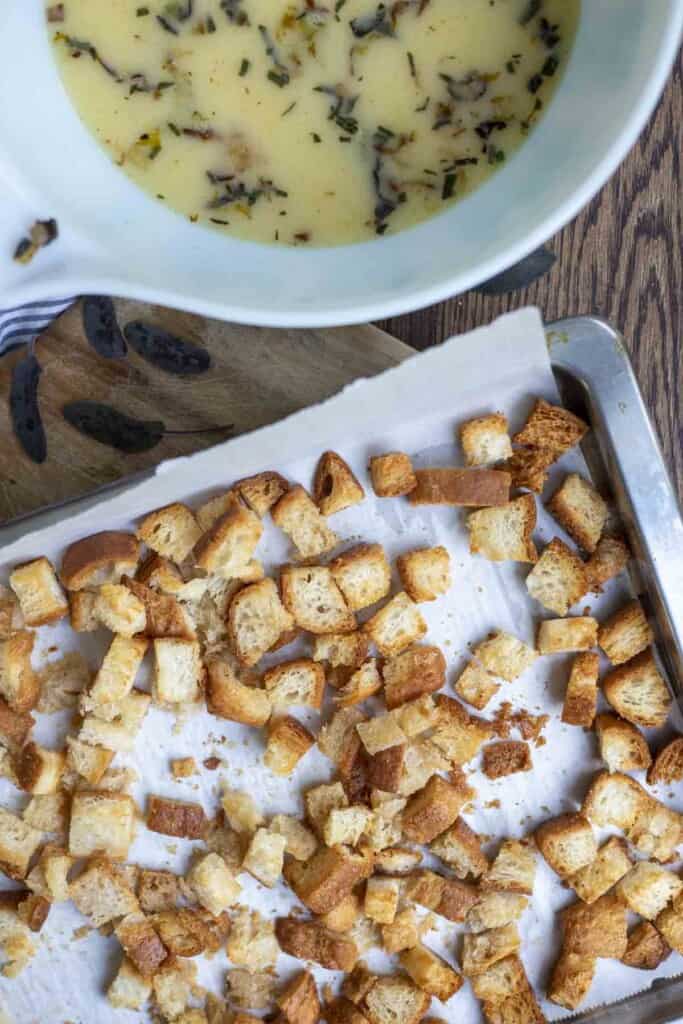
Pull the toasted bread out of the oven.
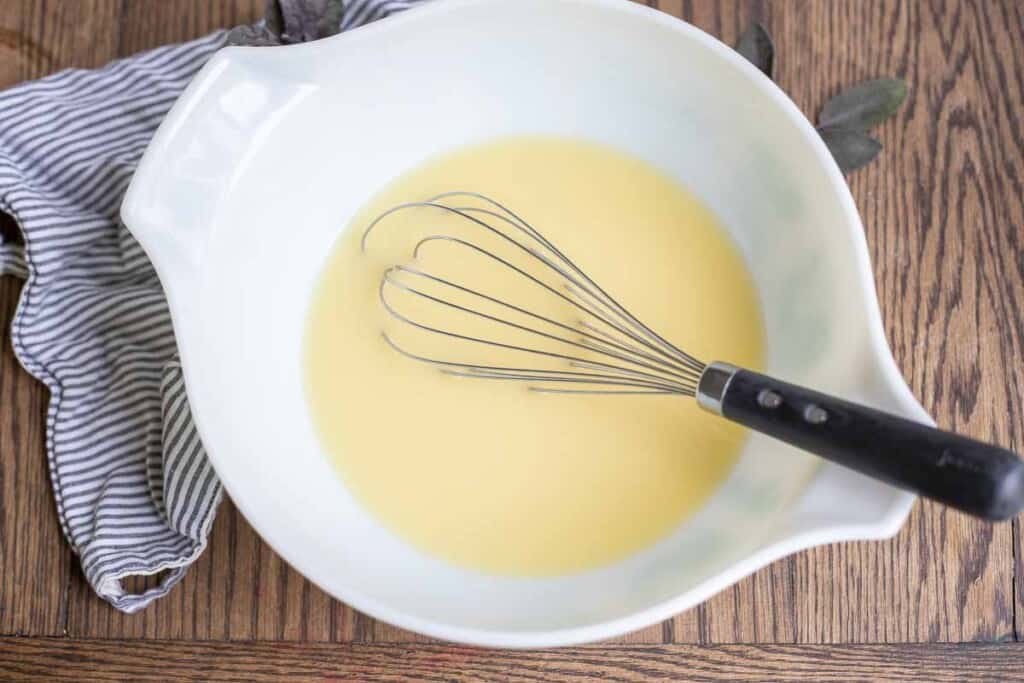
In a large bowl, whisk together one cup of chicken broth and eggs.
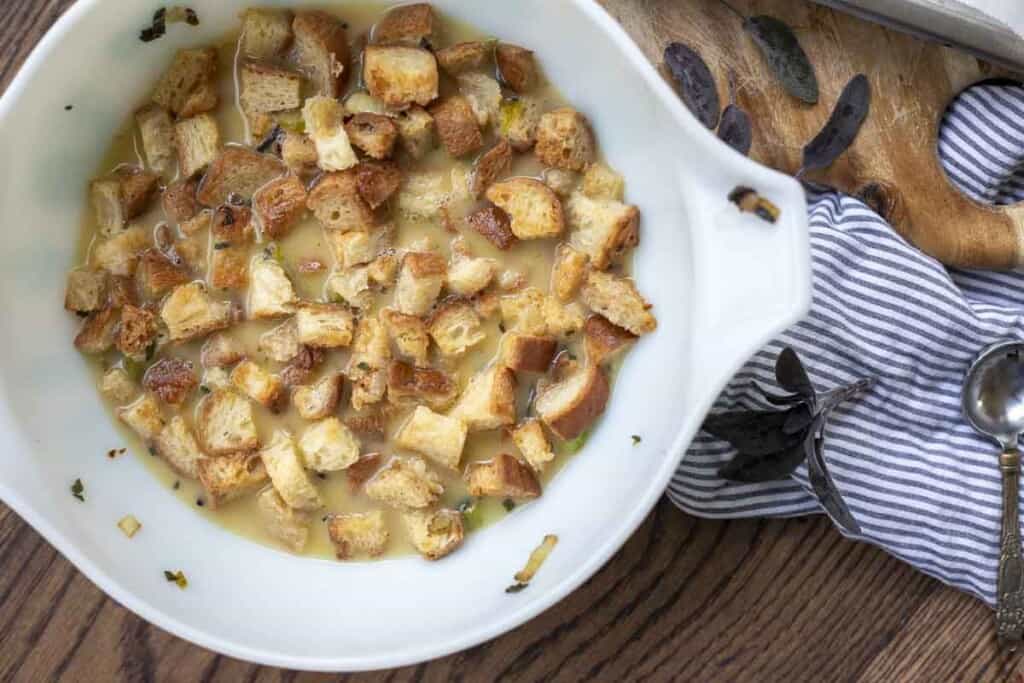
Add toasted, gluten-free bread and the sautéed vegetables to the bowl, mix, and allow the liquid to be absorbed by the bread for a few minutes. If the mixture seems dry, add another 1/2 cup to one cup of broth.
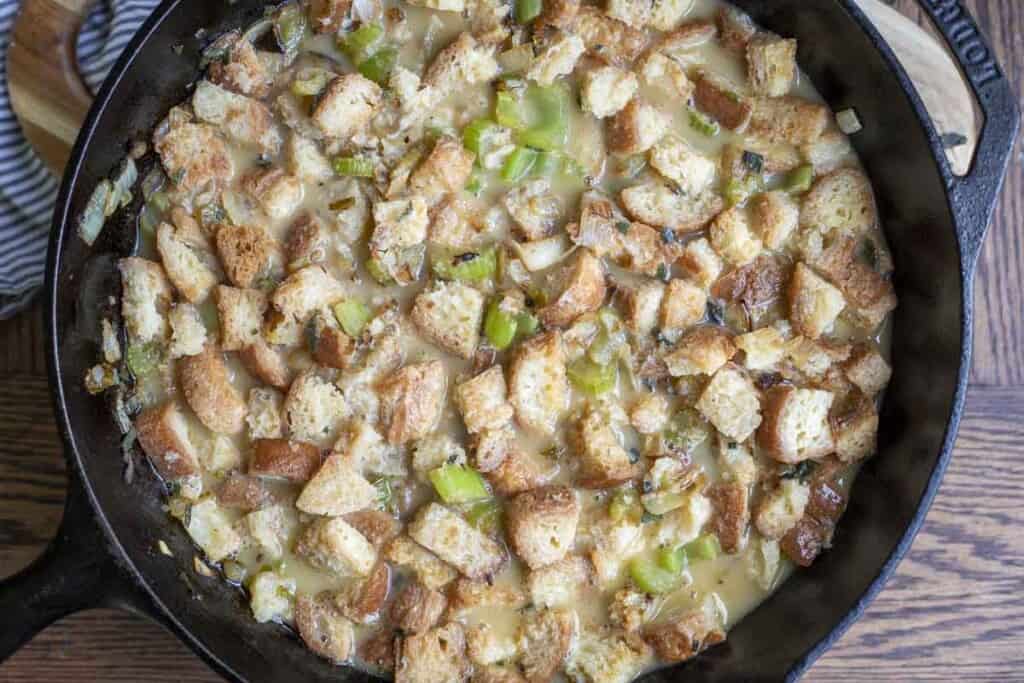
Pour the stuffing back into the cast iron skillet (or baking dish) and bake for 25-35 minutes, until it starts to turn golden brown.
FAQ
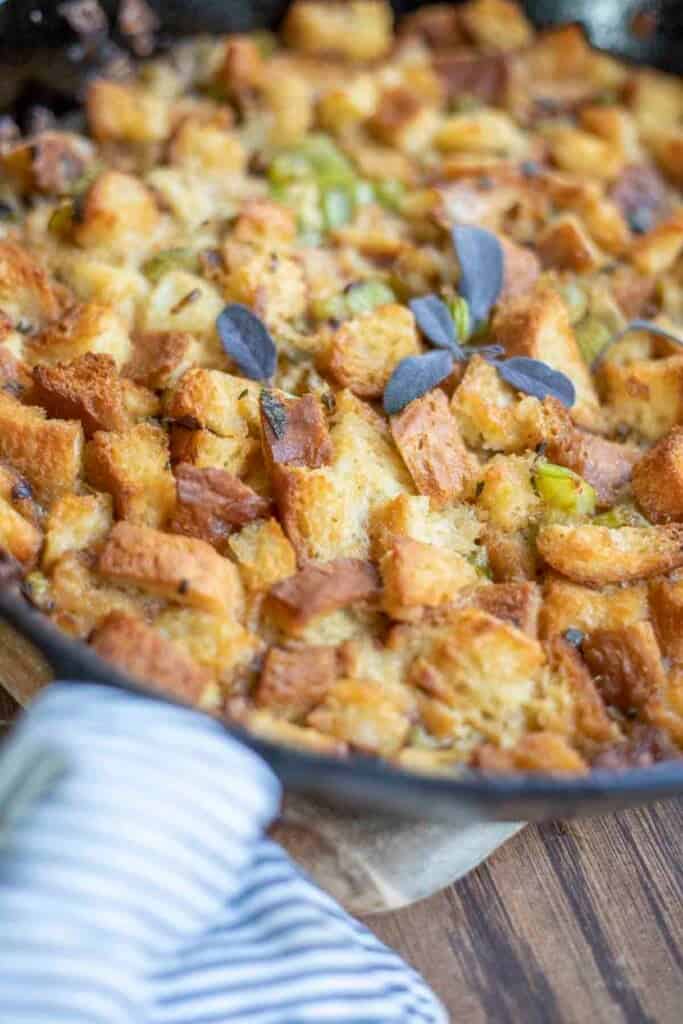
What kind of bread works best for stuffing?
You can use just about any bread for stuffing – sourdough, gluten-free sourdough, challah, sandwich bread, French, spelt, einkorn, etc.
Just make sure if you are trying to make this gluten-free that you use gluten-free bread.
Should I put eggs in my bread stuffing?
Yes. Eggs act as a binder to keep everything together.
Can I prep stuffing the night before?
If you would like to prepare this the night before, I suggest toasting the bread with butter and sautéing the vegetables and herbs together. Place them in the fridge. The next day, whisk the eggs with the broth. Add the bread and veggies. Allow to soak for a few minutes, then bake according to the directions.
Find More Delicious Holiday Favorites:
- Classic Green Bean Casserole Recipe From Scratch
- Best Cranberry Sauce Recipe
- Sweet Potato Casserole With Pecans
- Garlic Mashed Potatoes
- From Scratch Pumpkin Pie
- Sourdough Sugar Cookies
If you try this recipe and love it, I would love if you could come back and give it 5 stars!
Gluten Free Stuffing
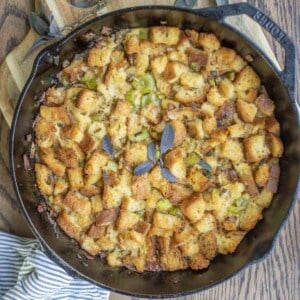
Ingredients
- 1 loaf gluten free bread, about 1 pound
- 1 stick unsalted butter
- 3 stalks celery, chopped
- 1 medium onion, chopped
- 1 tablespoon chopped fresh sage, or 1 teaspoon dried
- 1-2 cups homemade chicken broth*
- 1 tablespoon chopped fresh thyme, or 1 teaspoon dried
- 2 large eggs
- 2 teaspoon salt
- 1/2 teaspoon pepper
Instructions
- Prepare and bake gluten-free sourdough bread if making from scratch.
- Preheat oven to 350.
- Melt butter in a cast iron skillet or pan.
- Cut bread into one-inch slices, then into one-inch chunks.
- Spread bread cubes onto a parchment-lined baking sheet and pour about half of the melted butter over the bread pieces. Toss together.
- Bake for twenty minutes, stirring halfway in between so the bread doesn’t burn. You want it to get nice and toasty.
- Dice celery and onions, then place into pan with the remaining melted butter over medium-low heat.
- Sauté until they are a little soft, around 5-10 minutes.
- Chop fresh thyme and sage, then add to veggies. Or sprinkle in dried herbs.
- Add salt and pepper.
- Pull the toasted bread out of the oven.
- In a large bowl, whisk together one cup of chicken broth and eggs.
- Add toasted, gluten-free bread and the sautéed vegetables to the bowl, mix, and allow the liquid to be absorbed by the bread for a few minutes. If the mixture seems dry, add another 1/2 cup to one cup of broth.
- Pour the stuffing back into the cast iron skillet (or baking dish) and bake for 25-35 minutes, until it starts to turn golden brown.
Notes
- *The type of bread you are using may determine the amount of liquid needed. Some breads absorb more than others. I suggest starting with one cup of broth, then after adding the bread determine if 1/2 to one cup more need to be added.
- I love using fresh herbs, and thankfully sage is very frost tolerant and easily still growing in November. But if you don’t have access to fresh herbs, no worries – just substitute for dried.
- To make this dairy-free, substitute the butter for olive oil.
- The amount of salt added will depending on what type of broth you use and how much sodium it includes. Homemade broth will most likely have less salt and may need more. Where as store-bought broth has much more sodium and less salt may be needed. Salt to taste.
Nutrition
Nutrition information is automatically calculated, so should only be used as an approximation.
